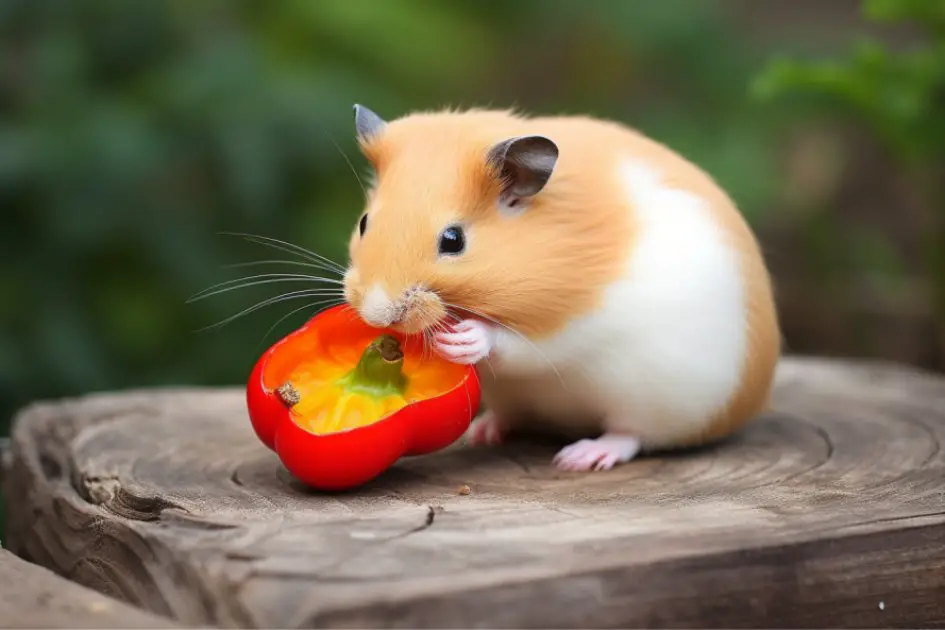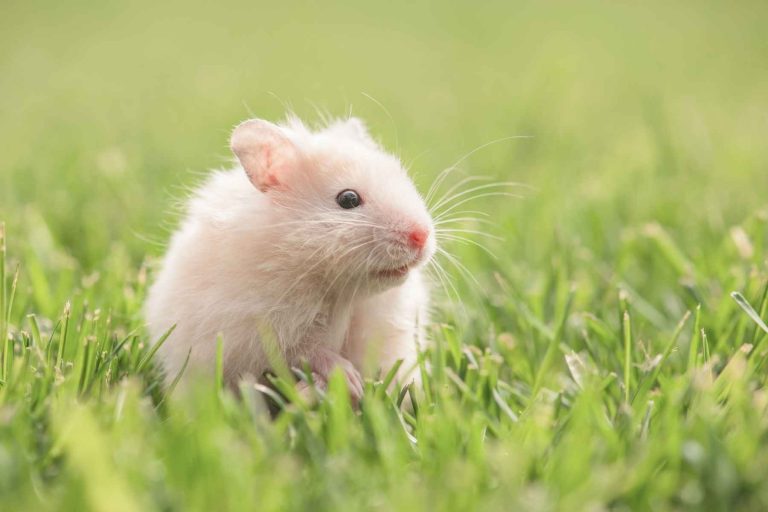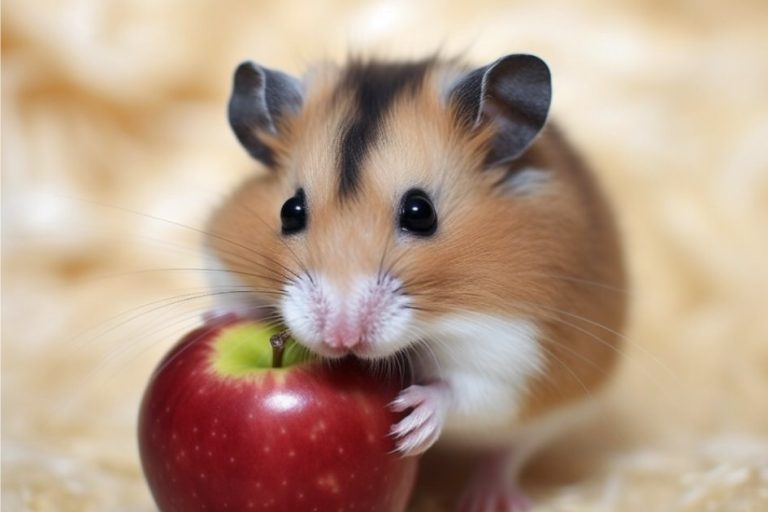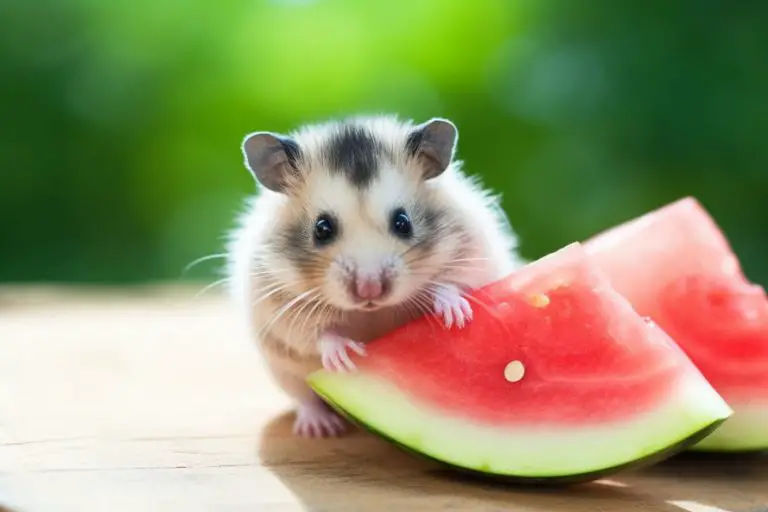Can Hamsters Eat Bell Peppers? (A Definitive Guide)

Hamster owners often wonder which foods are safe to share with their furry friends. One question that comes up is whether hamsters can eat bell peppers. Bell peppers, known for their rich nutritional content, can be a delightful treat for humans, but are they suitable for hamsters as well?
It is important to consider the dietary needs and restrictions of hamsters before feeding them any new food items. Luckily, bell peppers are not only safe for hamsters to consume, but they also provide numerous health benefits. These tasty vegetables can be a nutritious and enjoyable addition to a hamster’s regular diet.
When introducing bell peppers to a hamster, moderation is key. Overconsumption of any food can lead to health issues, even for such a healthy treat as bell peppers. With this in mind, hamster owners can confidently offer their pets small portions of bell peppers as a delicious and healthy snack.
Can Hamsters Eat Bell Peppers?
Hamsters can indeed eat bell peppers, as they are a safe and healthy addition to their diet. Bell peppers are packed with vitamins and minerals that are beneficial for hamsters. In particular, these veggies provide a good source of Vitamin C, which can help support a hamster’s immune system.
However, it is essential to understand the proper way to introduce bell peppers into a hamster’s diet. Firstly, only offer small portions to your hamster to ensure they can digest it without any issues. Secondly, remove any seeds and thoroughly wash the bell peppers before feeding them to your hamster. Doing so will minimize the risk of potential illness caused by pesticides or bacteria.
When feeding bell peppers to hamsters, variety is important. You may offer them different colors of bell peppers, such as green, yellow, red or orange, as each color has a slightly different nutritional profile. Introducing a diverse range of colors not only enhances the flavor but also provides a balanced nutritional intake.
Here is a list of guidelines to consider when offering bell peppers to your hamster:
- Wash the bell pepper thoroughly to remove dirt, pesticides, and bacteria.
- Remove seeds from the bell pepper, as they can be a choking hazard.
- Chop the bell pepper into small, bite-sized pieces for easy consumption.
- Offer small quantities of bell pepper to monitor your hamster’s reaction.
- Do not mix bell peppers with other fruits or veggies during the initial introduction.
In conclusion, bell peppers are a safe and nutritious food option for hamsters when properly prepared and introduced gradually into their diet. As with any new food, observing your hamster’s reaction is vital to ensure they’re enjoying and benefiting from the addition.
Nutritional Benefits
Bell peppers offer a variety of nutritional benefits to hamsters, making them a valuable addition to a balanced diet.
Vitamins and Minerals
Bell peppers are rich in several essential vitamins and minerals. They contain significant amounts of Vitamin A, Vitamin C, Vitamin B6, and Vitamin E. These vitamins play crucial roles in maintaining overall health, such as immune system support, eye health, and antioxidant properties.
Minerals found in bell peppers include calcium, iron, and potassium. Calcium is necessary for strong bones and teeth, while iron contributes to proper oxygen transportation in the body. Potassium aids in maintaining proper fluid balance and muscle function.
Fiber and Protein
Fiber is an important component of a hamster’s diet, as it promotes healthy digestion and can prevent gastrointestinal issues. Bell peppers provide a moderate amount of dietary fiber, which can help regulate bowel movements and maintain a healthy digestive system.
While not a significant source of protein, bell peppers do contain small amounts of this essential nutrient. Protein is vital for growth, muscle development, and tissue repair in hamsters.
Additional Nutrients
Bell peppers also contain other beneficial nutrients such as carotenoids, including beta-carotene and lycopene. These antioxidants help protect cells from damage caused by free radicals and support a healthy immune system. Furthermore, the presence of various antioxidants in bell peppers can contribute to overall health benefits for your hamster.
Feeding Guidelines
When it comes to feeding bell peppers to your hamster, it is essential to follow certain guidelines to ensure your pet’s safety and health.
Moderation and Serving Size
As with any treat or supplement to your hamster’s diet, moderation is key. Bell peppers should be given sparingly and never replace the staple diet of pellets, hay, and other essential nutrients. A small serving of bell pepper, roughly half the size of your hamster’s head, is sufficient for most hamster breeds. When serving, ensure the following precautions:
- Wash the bell pepper thoroughly to remove any pesticides or dirt.
- Remove any seeds, as they might pose a choking hazard.
- Cut the bell pepper into small, bite-sized pieces to prevent choking.
Introducing Bell Peppers to Your Hamster
Introducing new foods to your hamster should be done gradually to monitor any potential adverse reactions. Follow these steps when introducing bell peppers to your hamster’s diet:
- Start by offering a minuscule amount of bell pepper.
- Observe your hamster for any signs of discomfort or digestive issues.
- If no issues arise within 24 hours, you may gradually increase the serving size to the recommended quarter of a teaspoon.
It is crucial to be mindful of your hamster’s individual preferences and dietary needs. Some hamsters may enjoy bell peppers, while others may not show interest in them. Always consult with a veterinarian if you have concerns about adding new foods to your pet’s diet.

Types of Bell Peppers
Bell peppers, also known as sweet peppers, come in a variety of colors, each with its distinct flavor and nutritional profile. This section will discuss the four most common types of bell peppers: green, red, yellow, and orange.
Green Bell Peppers
Green bell peppers are the most common variety and are typically the most affordable option. They are harvested before they reach full maturity, which gives them a slightly bitter taste compared to other colored bell peppers. Green bell peppers are rich in vitamins and minerals, particularly vitamin C, vitamin A, and potassium.
Red Bell Peppers
Red bell peppers are fully ripened green bell peppers, which is why they typically have a higher price point. As they ripen, their flavor becomes sweeter and more aromatic, making them a popular choice for many dishes. In addition to their delicious taste, red bell peppers are packed with nutrients like vitamin C, vitamin A, and antioxidants such as beta-carotene and lycopene.
Yellow Bell Peppers
Yellow bell peppers are another variety of sweet pepper, offering a mild and slightly fruity taste. Their vibrant yellow color is a result of their lengthy ripening process. Yellow bell peppers are an excellent source of vitamins C, A, and B6, as well as minerals like magnesium and potassium.
Orange Bell Peppers
Orange bell peppers, like their yellow counterparts, have a sweet and fruity flavor profile. They share a similar nutritional profile with the rest of the bell pepper family and are high in vitamin C, vitamin A, and other essential nutrients.
In summary, each type of bell pepper offers a unique flavor and set of nutritional benefits. When considering whether it is safe for your hamster to consume bell peppers, it’s important to take into account their individual characteristics and choose the appropriate variety.
Risks and Precautions
Seeds and Stem
When feeding bell peppers to your pet hamster, it is important to remove the stem. It is difficult to digest and may induce choking. Contrary to other types of peppers, bell pepper seeds do not contain a substance called capsaicin, which may lead to irritation in your hamster’s gastrointestinal system. But the seeds do not provide much nutritional value and may induce choking.
Diarrhea and Gas
Too much of bell pepper consumption may cause diarrhea and gas in hamsters. This could be a result of the high water content in bell peppers. Introduce small portions of bell peppers to your hamster’s diet to monitor their tolerance and adjust accordingly to prevent any digestive issues.
Choking Hazards
It is crucial to be cautious of choking hazards when feeding bell peppers to your hamster. Cut the bell pepper into small, manageable pieces to minimize the risk of choking.
Toxic Foods
When giving bell peppers to your pet hamster, avoid mixing them with other fruits or vegetables that may be harmful to your pet. Refer to the following table of some common toxic foods for hamsters:
| Food | Why It’s Harmful |
| Onions | Contains toxic compounds that could lead to anemia |
| Garlic | Contains a toxic compound that could lead to anemia and digestive issues |
| Chocolate | Contains caffeine and theobromine which are toxic to hamsters |
Alternative Healthy Treats
Aside from bell peppers, there are a variety of other vegetables and fruits that can be given to hamsters as healthy treats. When selecting treats, it is essential to choose options that are safe, nutritious, and can be enjoyed in moderation. Introducing a new treat to your hamster’s diet should be done slowly, and always pay close attention to their response.
Vegetables are an excellent choice for hamsters as they provide essential vitamins, minerals, and fiber. Some popular options include broccoli, carrots, spinach, cucumber, kale, celery, zucchini, cabbage, and cauliflower. These veggies can be cut into small pieces and fed in moderation to ensure a balanced diet.
Many fruits can also serve as healthy treats for your hamster. Examples include apples, pears, and seedless grapes. When offering fruit, it is important to remove the seeds as they can pose a choking hazard. Additionally, fruit should only be given in small amounts due to its natural sugar content.
Here is a list of some favored vegetables and fruits for hamsters:
- Broccoli
- Carrots
- Spinach
- Cucumbers
- Kale
- Celery
- Apples (seedless)
- Pears (seedless)
- Grapes (seedless)
Remember that variety is key, and offering a mix of these alternative treats will help maintain your hamster’s interest and ensure they receive a diverse range of nutrients. Keep in mind that not all fruits and vegetables are suitable for hamsters; therefore, always conduct research and consult with a veterinarian before introducing new food items to their diet.
Foods to Avoid
While bell peppers are safe for hamsters to eat, there are certain foods that should be avoided in their diet. Some foods may contain high levels of sugar or fat, which can lead to obesity and diabetes in hamsters. It’s important to provide a balanced diet for your pet, to ensure their immune system remains strong and functioning properly.
Hamsters should not be fed sweet or spicy peppers, such as chili peppers. These types of peppers can cause digestive issues and may be too hot for your hamster to handle. Stick to mild options like green or red bell peppers instead.
Garlic and onions should also be avoided, as they contain compounds that can be toxic to hamsters when consumed in large quantities. Avoid giving your hamster any food with these ingredients.
When feeding your hamster treats, steer clear of options high in sugar, fat, and calories. Some treats to avoid include:
- Peanuts: High in fat, which may lead to weight gain and obesity. (One unsalted nut per week can be ok.)
- Chocolate: Contains ingredients that are toxic to hamsters, such as caffeine and theobromine.
Always research any new foods you introduce to your hamster’s diet to ensure they are safe and nutritious.
Additional Health Considerations
Bell peppers are known for their nutritional benefits, and including them in a hamster’s diet can provide various health advantages. Firstly, bell peppers contain antioxidants that combat free radicals in the body, which can contribute to a hamster’s overall health.
One significant aspect of bell peppers is their positive effect on eye health. Bell peppers contain lutein and zeaxanthin, two important carotenoids that can promote good vision and help protect against eye-related issues.
In addition to eye health, bell peppers can also benefit the cardiovascular system. The high content of vitamin C in bell peppers helps in the production of collagen, which is crucial for maintaining the integrity of blood vessels. This can lead to improved blood circulation and a healthier heart for your hamster.
Arthritis is another concern that can be addressed by introducing bell peppers to a hamster’s diet. The anti-inflammatory properties of bell peppers help reduce inflammation and can aid in alleviating symptoms of arthritis in these small pets.
Lastly, vitamin C in bell peppers can help prevent scurvy, a disease caused by vitamin C deficiency. By providing bell peppers as a supplement to a hamster’s diet, owners can ensure that their pets get an adequate intake of this essential nutrient.






